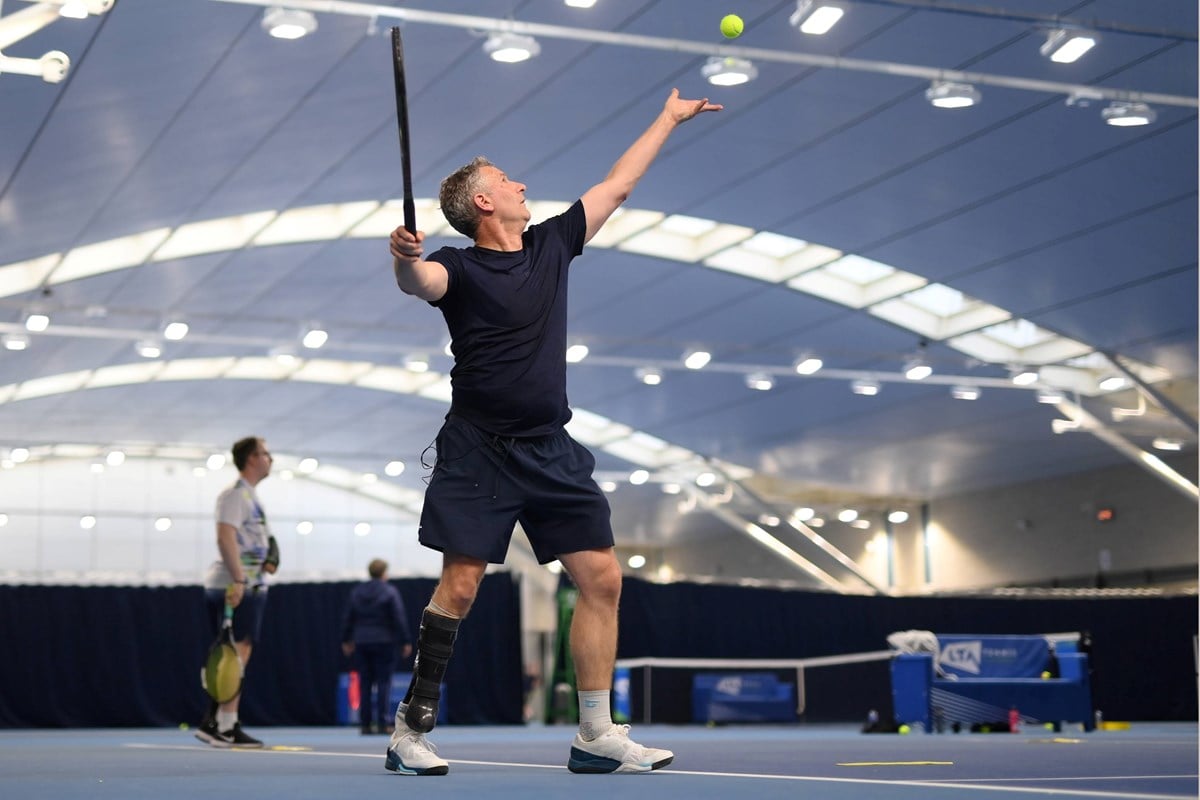Para standing tennis

Find out everything you need to know about para standing tennis, the rules and how you can get involved, here.
What is para standing tennis?
Para standing tennis is a format of our sport for people with physical impairments who want to play tennis without the use of a wheelchair.
While para standing tennis is an evolving, new format, we want to create more opportunities for the para standing community to play, compete and enjoy our sport. It doesn’t matter your age, background or your level, anyone can play.
We're working with national partners of Limb Power, Cerebral Palsy Sport, Dwarf Sport Association and the military to open up tennis to their communities.
Who can play para standing tennis?
Para standing tennis is for anyone with a physical impairment such as limb loss, limb deficiencies, cerebral palsy, acquired brain injuries, and people who are short statured.
Para standing tennis integrates very easily with the non-disabled game as well, so you can play with anyone.
Where can you play para standing tennis?
You can play para standing tennis at any tennis venue across the country – parks, clubs, community centres, you name it.
Because the rules are so similar to non-disabled tennis, this means you can book a court anywhere and start playing today.
For more specific para standing tennis sessions or coaching, speak to your local tennis venue or contact your nearest Open Court venue.
Para standing tennis rules
One of the great things about para standing tennis is that the rules are largely the same, without needing any modifications – full size court, same rackets, same tennis balls, etc.
The only difference is that for some classifications you are allowed up to two bounces so you can play against other para standing tennis players, as well as non-disabled players.
Here’s a rundown on para standing tennis classifications and rules for competition:
|
Classification |
Impairment |
Rules |
|
PST 1 |
Upper limb disability or similar impairment, such as cerebral palsy with limited mobility impact. |
One bounce allowed. |
|
PST 2 |
Below knee amputee or cerebral palsy with similar mobility level. |
One bounce allowed. |
|
PST 3 |
Above knee amputee, double-arm impairment, or cerebral palsy with more severe mobility issues. |
Two bounces allowed. |
|
PST 4 |
Short stature or impairment with similar impact on mobility. |
Two bounces allowed. |
Para standing tennis competitions & camps

There are opportunities for para standing players to enter competitions from beginner level right up to sanctioned ITF European and World level events.
We are working on a new pathway to deliver para standing tennis competition at tennis venues across the country – check back soon to find out more.
Throughout the year, we’ll also be running camps in partnership with the Dan Maskell Tennis Trust for players to train and develop their skills – more information will be available soon.
Para standing tennis – coaches information
If you’re a tennis coach looking to find out more about para standing tennis and want to find out more about how you can adapt your sessions – check out our para standing tennis fact sheet below or contact your local Open Court programme.
Find out more about para standing tennis
If you have any further questions on para standing tennis and how you can get involved – please get in contact via email at: disabilitytennis@lta.org.uk
You can also join in the para standing tennis community page on Facebook.
